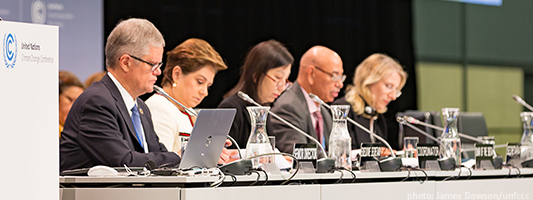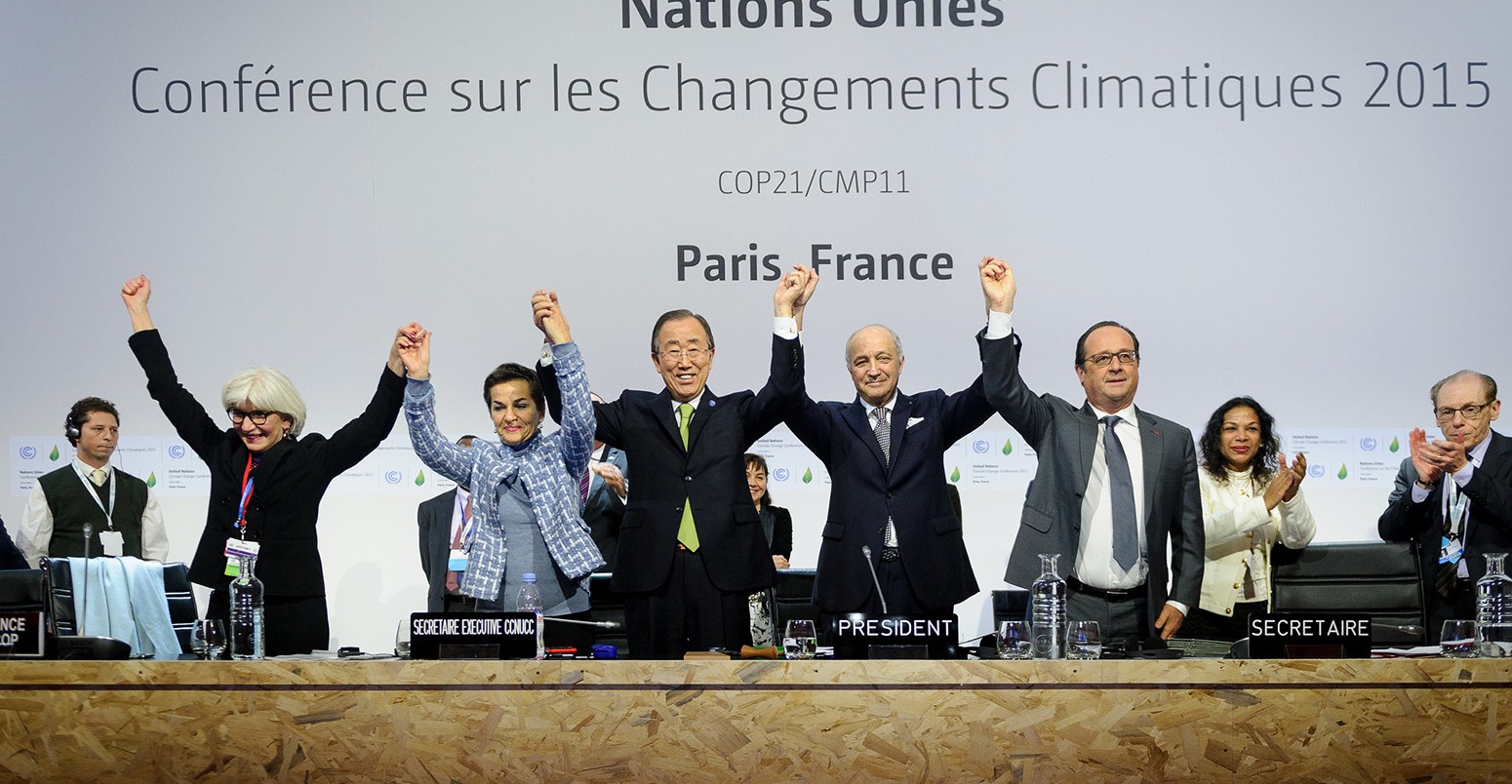The climate conference in Bonn ended on May 18th, 2017. The two-week conference addressed many climate concerns, including addressing the rulebook for meeting the goals set forth in the Paris Agreement, adaptation finance, and the global stocktake. The 2018 Facilitative Dialogue, which seeks to measure progress and inform the following round of NDC’s, was also addressed at the Bonn climate conference.
NDC’s, or Nationally Determined Contributions, are the pledges set forth by individual countries. Scienti sts believe that current NDC’s are not ambitious enough to stop global temperatures from rising 2°C above pre-industrial levels [1]. As a result, it will be critical for the Facilitative Dialogue to be successful in motivating countries to raise ambitions to a level that will successfully decrease global temperatures. Yamide Dagnet, of the World Resources Institute, commented that the Facilitative Dialogue still needs to gain creativity to make the dialogue interactive, real, and connected to what people really need [1]. Real ideas are needed to inform delegates on how to meet ambitions, as the dialogue is the first step in stocktaking.
sts believe that current NDC’s are not ambitious enough to stop global temperatures from rising 2°C above pre-industrial levels [1]. As a result, it will be critical for the Facilitative Dialogue to be successful in motivating countries to raise ambitions to a level that will successfully decrease global temperatures. Yamide Dagnet, of the World Resources Institute, commented that the Facilitative Dialogue still needs to gain creativity to make the dialogue interactive, real, and connected to what people really need [1]. Real ideas are needed to inform delegates on how to meet ambitions, as the dialogue is the first step in stocktaking.
Kaveh Guilanpour, the Minister of Foreign Affairs from the Marshall Islands, stated that the Facilitative Dialogue is a “process… it’s not just going to be something that happens at COP24, but it’s a process that will go on throughout the year [1].” Allowing the Facilitative Dialogue to be a process, rather than simply an end goal, creates an opportunity for the dialogue to be fluid in structure, shifting and changing to meet the needs of countries and the resulting ambitions.

At the start of the Bonn Climate Conference, UNFCCC Secretariat Patricia Espinosa called for a 7.9% budget increase to support the Facilitative Dialogue, CMA, and APA [2]. The presidencies of COP22 and COP23 began informal consultations on the modalities of the Facilitative Dialogue, with many delegates offering inputs. Concerns for the Facilitative Dialogue were introduced. Specifically, some delegates wondered if the dialogue would have the strength to foster political momentum or the connection to link dialogue processes with review and transparency. Without political momentum, it seems ambitions would fall short and there will not be a clear path for countries to raise ambitions or understand how to meet ambitions, financially or technically. Connection of processes to review and transparency is essential to maintain awareness for where ambitions are lacking and again, how to modify ambitions to meet climate change goals.
At the Bonn Climate Conference, several ideas were called for, including [3] [4]:
- Mexico believes the scientific community and the IPCC need to have strong roles in the Facilitative Dialogue.
- Guatemala believes work on the Facilitative Dialogue is critical for reaching the “trajectory” emphasized by science.
- Maldives believes the design of the Facilitative Dialogue should be completed byCOP23.
- Deo Saran of Fiji believes the Facilitative Dialogue preparations are necessary for COP23.
- Gebru Jember Endalew of the LDC group believes the Facilitative Dialogue is key to increasing ambitions.
- India believes the Facilitative dialogue should address how mitigation efforts will consider poverty eradication and equity.
- Argentina believes the dialogue should consider an early entry into force of the Paris Agreement
As stated earlier, scientists are concerned that current NDC’s are not ambitious enough to stop global temperature increase from a level of 2°C above pre-industrial levels. Given the concern of scientists, the Facilitative Dialogue will need to be efficient and effective in raising ambitions. Just as the LDC group believes increasing ambitions is necessary and India believes that equity and poverty eradication must be considered in the dialogue, the Facilitative Dialogue must meet countries where they are, addressing individual needs and shining a light on opportunities for improvement. Capacity building will be important for the Facilitative Dialogue to consider, as many countries lack the capacity to combat climate change. As such, countries need assistance to adapt to our ever-changing world. Frank Bainimarama, Fijian Prime Minister and President of COP 23, introduced the concept of Talanoa: “this is the process of inclusive participatory and transparent dialogue that builds empathy and leads to decision-making for the common good [5].” Bainimarama envisions a dialogue that is transparent and inclusive for all.

Although there is still much work to be done in preparation for the 2018 Facilitative Dialogue, the Bonn Climate Conference was an opportunity for countries to come together to voice their concerns and their visions for what the dialogue can one day become.
[1] http://enb.iisd.org/videos/climate/unfccc-sb46-env/monday-15-may-2017/
[2] http://enb.iisd.org/download/pdf/enb12701e.pdf
[3] http://enb.iisd.org/download/pdf/enb12701e.pdf
[4] http://enb.iisd.org/vol12/enb12676e.html
[5] https://vimeo.com/218219058
Photo 1: http://enb.iisd.org/videos/climate/unfccc-sb46-env/monday-15-may-2017/




